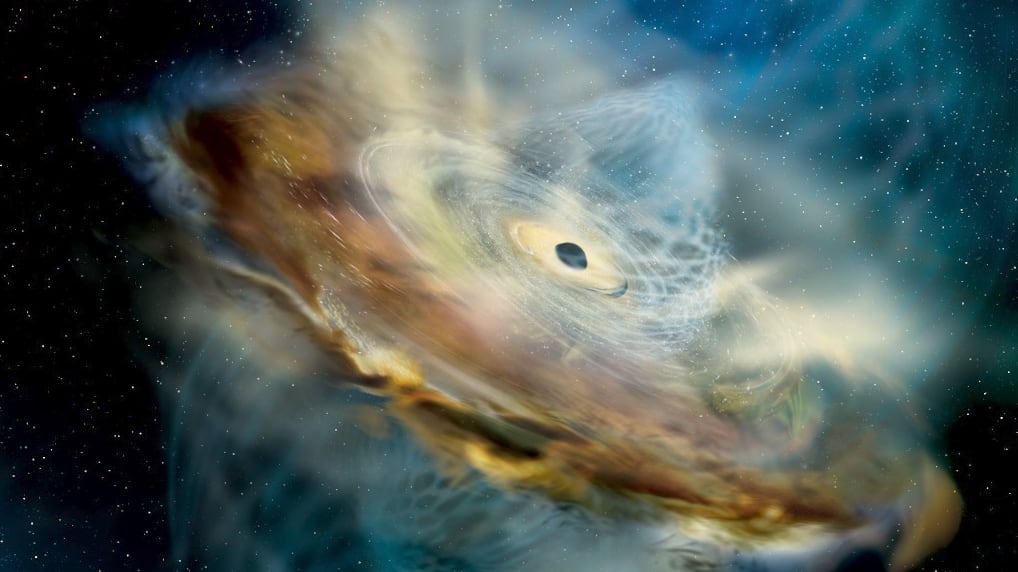Black holes are some of the strangest objects in space. These balls of dense matter are scattered throughout the Milky Way and have gravitational fields so powerful, nothing can escape their gaping maws—not even light. While we can’t see a black hole head-on like we would a star or a planet, we’ve learned a lot by observing how they affect the fabric of space around them. Now astronomers have discovered something about these cosmic enigmas that’s upended our understanding of them.
In a new study published May 5 in The Astrophysical Journal, an international team of astrophysicists found that black holes can flip the direction of their magnetic fields. This spontaneous reversal was noticed when a black hole in a galaxy 236 million light-years away suddenly got 100 times brighter before simmering down. This discovery could mean that black holes have a much more dynamic nature than previously thought—and may even help us find more black holes exhibiting the same behavior.
When a black hole sucks in gas and dust from galaxies around it, these materials swirl and fall into it and gather to form a rotating disk that generates radiation scientists can see from billions of light-years away.
ADVERTISEMENT
Because space gas and dust also carry magnetic charges, they give the disks a magnetic field that wraps around the black hole in a particular direction, much like how the magnetic fields around Earth point north. The directionality of the magnetic field is believed to influence how gasses, planets, and other objects fall into a black hole.
In late 2017, astronomers noticed a specific black hole, dubbed 1ES 1927+654, had grown super bright, peaking and emitting more visible and much more ultraviolet light by May 2018. Its X-ray radiation was also taking a hit.
“Normally, if the ultraviolet rises, your X-rays will also rise,” Nicolas Scepi, the new study’s co-author and a postdoctoral researcher at JILA, a joint research institute between the University of Colorado Boulder and the National Institute of Standards and Technology, said in a press release. “But here, the ultraviolet rose, while the X-ray decreased by a lot. That’s very unusual.”
“Rapid changes in visible and ultraviolet light have been seen in a few dozen galaxies similar to this one,” Sibasish Laha, a research scientist at NASA’s Goddard Space Flight Center, said in a press release put out by the space agency. “But this event marks the first time we’ve seen X-rays dropping out completely while the other wavelengths brighten.”
By October 2018, the black hole’s x-ray radiation came back. Later in 2021, everything went back to pre-super bright light conditions. All this made the researchers realize they may have stumbled across something unique and previously unobserved in the cosmos: a black hole flipped its magnetic field.
“A magnetic reversal, where the north pole becomes south and vice versa, seems to best fit the observations,” Mitchell Begelman, an astrophysicist at CU Boulder and study co-author, said in the press release.
The researchers propose it went down like this: When the black hole sucked in gasses with opposite magnetic charges to its own, the magnetic field in one direction got so weak that it switched to the other direction like a game of tug-o-war.
This new finding lends better insight into how black holes generate radiation. It could also help us to locate more black holes, which have proved elusive despite tens of millions of them likely dotting the Milky Way, by watching out for and analyzing any other super-bright radiation events that blip on our cosmic radar.
“Maybe there are some similar events that have already been observed,” said Scepi. “We just don’t know about them yet.”







